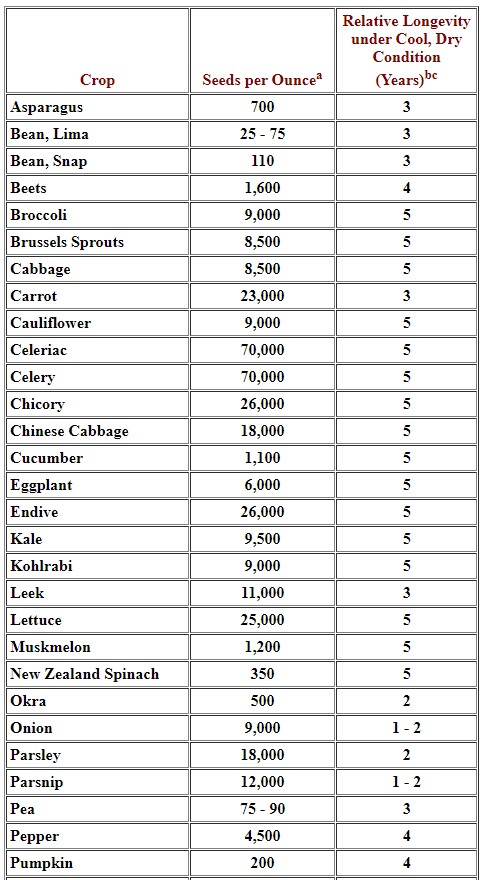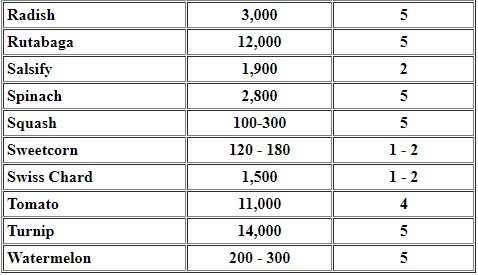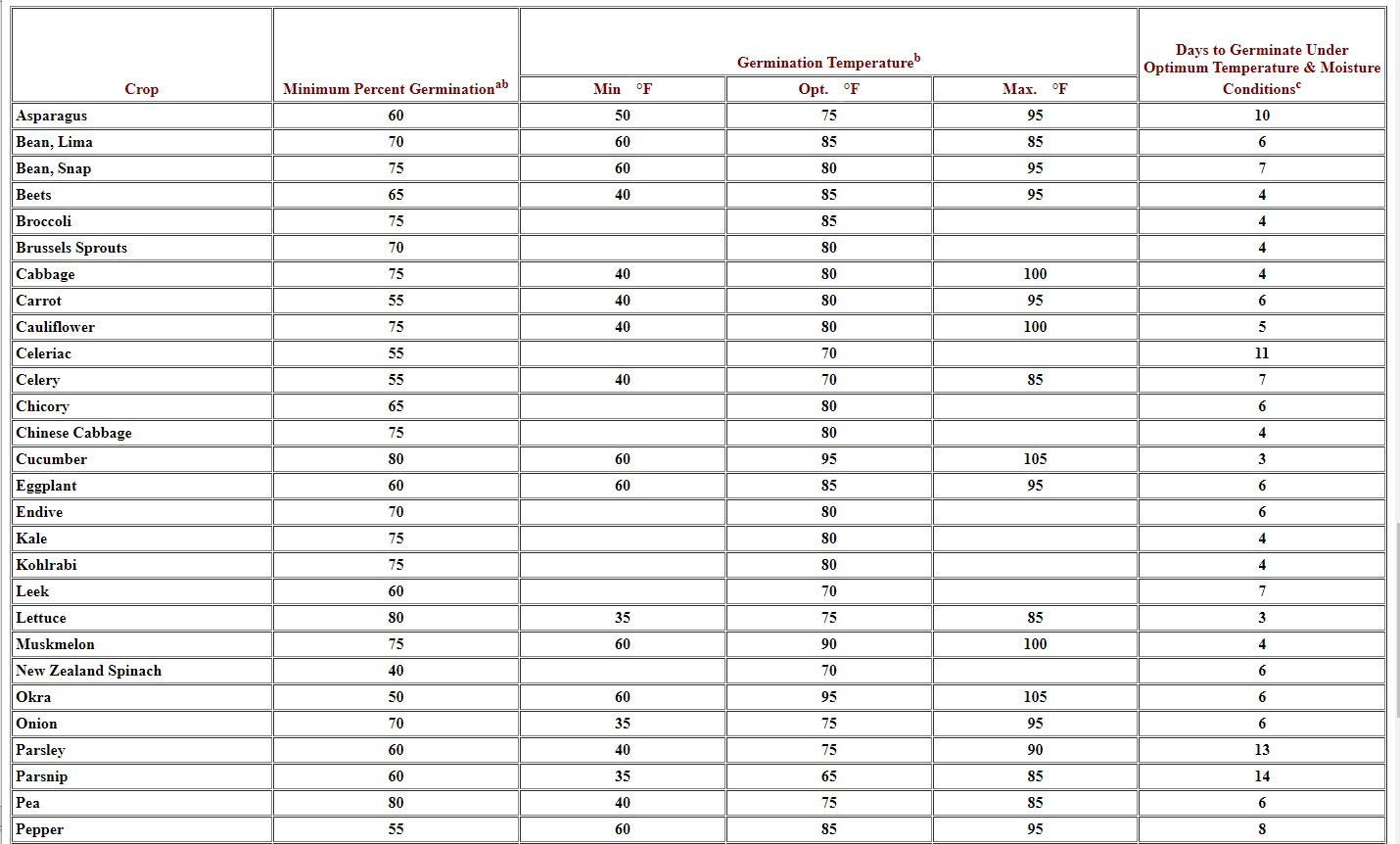

STORING SEEDS
Re-posted from University of Nebraska-Lincoln
G80-503-A
Vegetable Garden Seed Storage and Germination Requirements
This NebGuide has information on the selection and storage of vegetable garden seed.
Dale T. Lindgren, District Extension Specialist (hort)
A successful garden begins with the selection and use of high quality seed of adapted superior varieties. Start by purchasing seed from a reputable seed company. Save records of your seed orders, so if you do have a complaint you can contact the sales company. Saving records of your seed orders is also useful for keeping track of the varieties you planted.
Often crop seed is left over in a package after planting. This excess seed can be saved for next year's garden, usually with little loss in germination. Seed stored for more than one year, however, will require additional care to insure high germination for future use.
Storage temperature, relative humidity and seed moisture are the important factors in determining how long seed can be stored without loss of germination. The storage life of seed also varies greatly with species (Table I).
In general, longer seed storage life is obtained when seeds are kept dry and at low temperatures. Let seeds air-dry for several weeks before storing. Do this when the relative humidity is low and the air temperatures are warm. Spreading the seed out in direct sunlight for 6 to 8 hours works well, as long as the seed temperature does not generally exceed 100°F. Drying the seed in shade is usually better. The dry seed should be placed in packages and stored in moisture-proof containers. Containers such as sealed cans or jars with air tight caps work satisfactorily. Storage temperatures between 35°F and 50°F are satisfactory when the moisture content of the seed is low.
An alternate method of keeping seeds dry is to place them in a sealed jar with calcium chloride, silica gel or powdered milk. These substances should not touch the seed. These products absorb moisture from the seeds. Use enough of the product or replace it as needed so that the moisture absorbed from the seed will produce no visible change in the product used.
Beans, peas and okra may develop "hard" seeds if their moisture content is reduced to 7 percent or below. This seed will not germinate satisfactorily. "Hard" seed will germinate better if exposed to a humid environment for several weeks before planting.
It is a good practice to check seed which has been stored for more than one year for germination (Table II). If germination is poor, discard it and buy fresh seed. To test for germination, place a counted number of seeds (such as 25 or 50) between paper towels, strips of soft muslin or blotting paper in a petri dish, baking dish or similar container. Label each "lot" of seed with the variety name. Moisten the seeds, and cover the container to prevent the seeds from drying out. Hold at a temperature of 70 to 75 °F. Remove and count the seeds as they germinate. Make your final count at the end of two to three weeks, when all the seeds have had ample time to germinate. Compute the percentage of germination.
Seed "lots" with lowered germination may still be safe for planting if they are sown at higher rates than usual. Also remember that weakly sprouting seeds have a high mortality rate when planted in the soil.
Germination conditions should be optimum when the seed is planted outdoors in the garden or indoors for transplants. This will not only increase germination percentage for older seed but will also insure high germination for fresh seed.
Table II lists information about seed germination for the common vegetables. This table is a guide for comparisons when calculating germination percentages and when germinating seed for home garden use. Germination requirements will vary with seed source, seed storage conditions, age of seed and the environmental conditions under which the seed is germinated. Minimum Federal Standards for vegetable seed germination are also included.
Table I. Seed weight and longevity for home garden vegetables


aSeeds, The Yearbook of Agriculture. 1961. Stefferud, A., Editor. The United States Government Printing Office.
bHandbook for Vegetable Growers. 1960. Knott, Joe. John Wiley & Sons, Inc.
cVegetable Growing Handbook. 1979. Splittstoesser, W.E. AVI Publishing, Inc.
Table II. Germination data for home garden vegetable seed.


aMinimum percent germination to federal standards.
bHandbook for Vegetable Growers. 1960. Knott, J.E. John Wiley & Sons, Inc.
cSeeds, The Yearbook of Agriculture. 1961. Stefferud, A., Editor. The United States Government Printing Office.
Issued in furtherance of Cooperative Extension work, Acts of May 8 and June 30, 1914, in cooperation with the U.S. Department of Agriculture. Kenneth R. Bolen, Director of Cooperative Extension, University of Nebraska, Institute of Agriculture and Natural Resources.
University of Nebraska Cooperative Extension educational programs abide with the non-discrimination policies of the University of Nebraska-Lincoln and the United States Department of Agriculture.